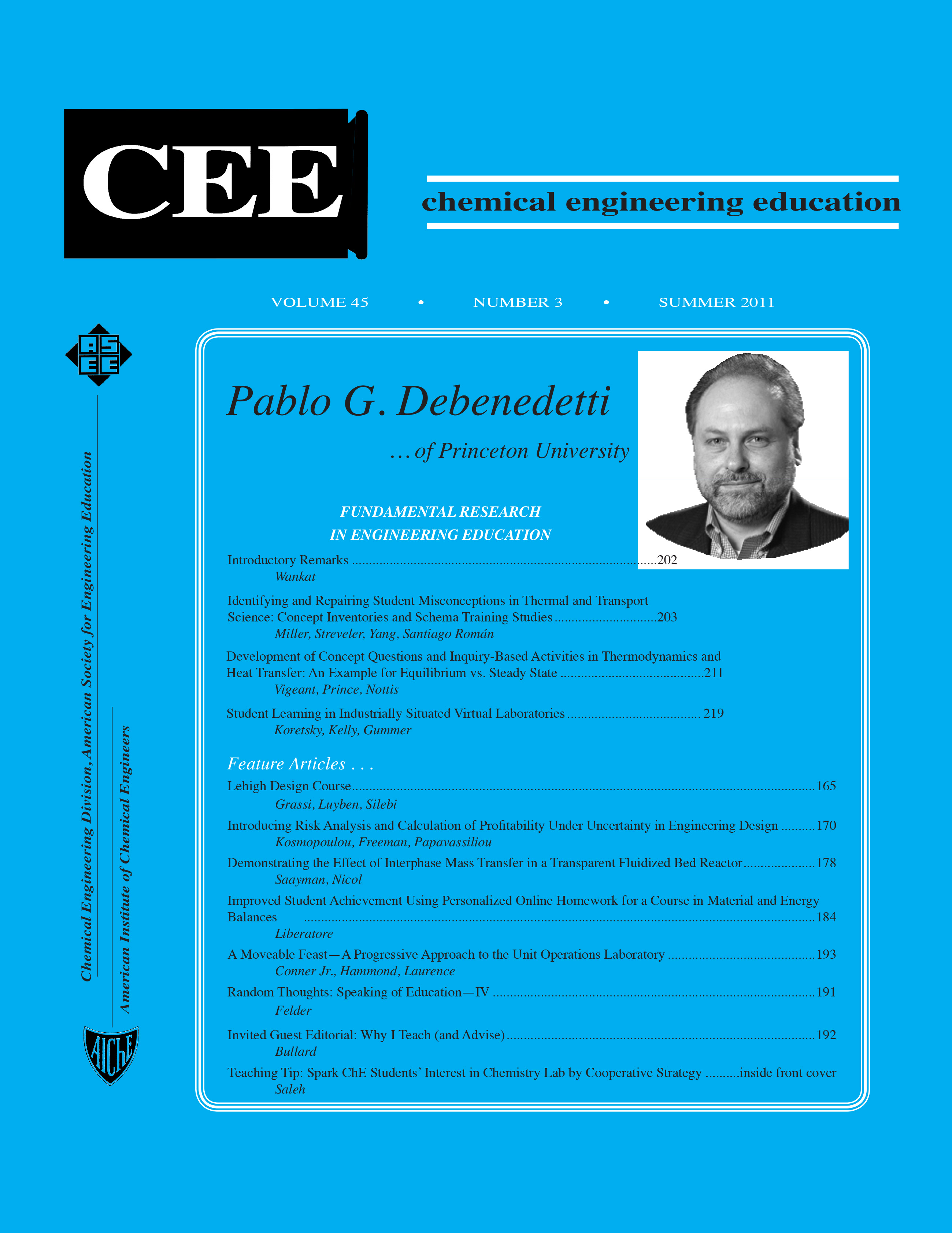Demonstrating the Effect of Interphase Mass Transfer in a Transparent Fluidized Bed Reactor
Abstract
A demonstration experiment is described that employs the ozone decomposition reaction at ambient conditions on Fe2O3 impregnated Fluidized Catalytic Cracking (FCC) catalyst. Using a two-dimensional see-through column the importance of interphase mass transfer is clearly illustrated by the significant difference in ozone conversion between the homogeneous and bubbling fluidization regimes. The principle is enhanced by simultaneous visual observation. Analysis of the conversion measurements at different superficial velocities clearly indicates the severity of interphase mass transfer in the bubbling regime and also shows how the mass transfer effect diminishes in the turbulent regime. The paper supplies detail on the demonstration equipment and gives guidelines on student interpretation possibilities.


